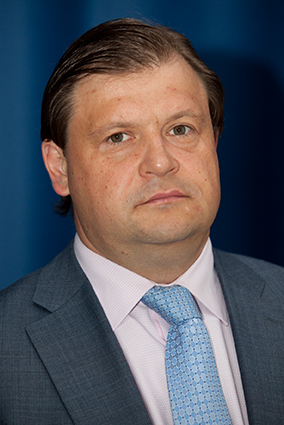|
In-Depth
50 Years of Excellence
In an exclusive interview with Rapaport Magazine, Maksim Shkadov, director general of Kristall Smolensk, discusses the firm and the diamond industry.
By Anastasia Serdyukova

| | Maksim Shkadov |
The manufacturer Kristall, based in the old city of Smolensk, is the largest Russian manufacturer and exporter of polished diamonds. The company, which marks its fiftieth anniversary in 2013, is the embodiment of Russian manufacturing and quality. Yet, with the diamond market going through turbulent times, the company has to work hard not to lose its standing. Its Director General Maksim Shkadov, who is also the president of the International Diamond Manufacturers Association (IDMA), talked to Rapaport Magazine about the challenges the industry is facing.
The situation in the market is rather tense. What is your forecast for the upcoming months?
Polished diamonds increasingly find themselves between a rock and a hard place because there are more polished diamonds than the jewelry industry consumes and there’s still price pressure from the rough market. At the moment, on the one hand, supply and demand of polished has reached a certain equilibrium; on the other, speculation with rough, which was characteristic of the market in 2012, has ceased. Rough prices have plateaued at a more or less stable level. It’s difficult to talk about any long-term forecast because what is going on in the world has a strong impact on the industry.
YOU MUST HAVE JAVASCRIPT ENABLED TO VIEW THE SLIDESHOW
Article from the Rapaport Magazine - July 2013. To subscribe click here.
|
|